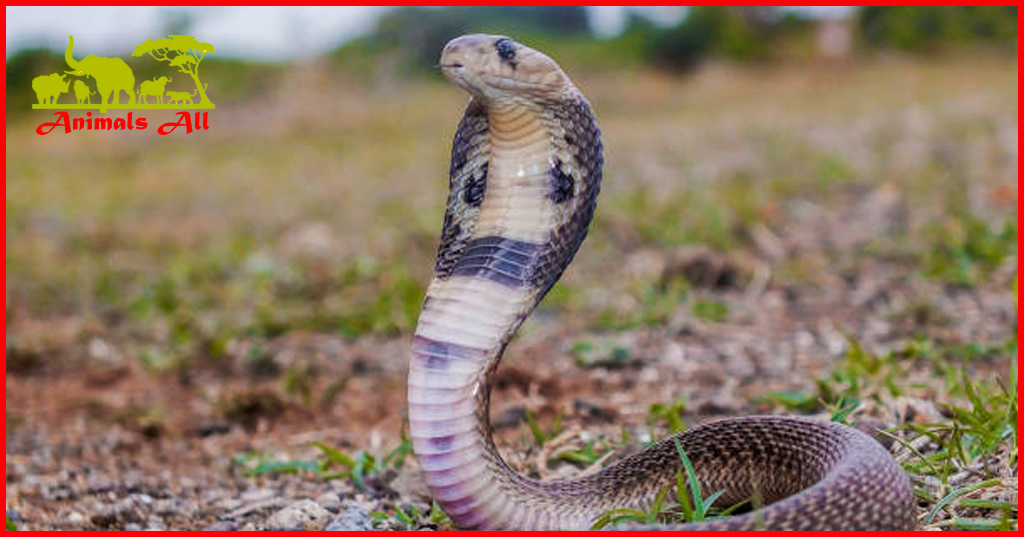
Complete information about Indian cobra
The Indian cobra is a reptile of the order Squamata, family Elapidae. Cobra Reptiles the length of an adult Indian cobra is 1.35-1.5 meters, and some individuals can be as long as 2 meters. Its skin folds are wide and have obvious curved eye-shaped patterns on its skin, which resembles glasses. The pattern of eyeglasses on the skin folds varies according to the body color of the snake species.
It find mainly in mainland India (except northeastern India), Sri Lanka, Nepal, Bhutan and Bangladesh. It lives in low-altitude areas and prefers relatively dry farmland, orchards, hillsides with mixed weeds and shrubs, and the bottom of monsoon forests. The Indian cobra is very ferocious, has a sense of territory, is sensitive to the movement of objects, is highly aggressive, and becomes angry when disturbed by people. It catches prey quickly and accurately. The Indian cobra is an oviparous animal that lays eggs between April and July each year . The female snake can lay 12 to 30 eggs each time. Which are laid in an underground nest. The incubation period is 48 to 69 days

Indian cobra is highly revered in Indian mythology and culture and is often see with snake charmers. The Indian cobra dance is a famous folk entertainment in India . The Indian cobra is protect in India under the Wildlife Protection Act . The Indian cobra is also list as a species under Appendix II of the Convention on International Trade in Endangered Species of Wild Fauna and Flora (CITES)

Morphological characteristics
Average length of an Indian cobra is 1.4–1.6 meters, with the longest known record being a male snake measuring about 2.25 meters. Common cobras are usually over 1.6 meters long. The longest record holder in Sri Lanka is a female snake measuring 1.85 meters long. Males generally have larger torsos and tails than females.
The scales of the Indian cobra are shingle and arrange diagonally in a variety of colors. The Indian cobra can be light brown, brown, olive green, dark gray-green, or completely black, and these colors can be blend or stripe. The throat is usually pinkish yellow. However, some albino individuals are also found, with pinkish yellow bodies and red eyes.
When facing an enemy, the Indian cobra’s neck skin can be stretch out to create its famous threatening posture.
Indian cobra has no external ears, eardrums, ear holes, or Eustachian tubes. However, it has a very developed vision. Unlike most vertebrates, which rely on the convex lens of the eyeball to focus the scene. The Indian cobra’s lens is directly attach to its retina. The Indian cobra’s upper and lower eyelids are fuse together to form a “transparent membrane”. When the snake sheds its skin, the color of its eyes usually becomes grayish white, because at this time its two “transparent membranes” will become two milky white barriers and fall off during the molting process.
Habitat
The Indian cobra’s habitat is mostly in virgin forests, rice fields and parks, but it can also live in dark places such as sewers
Living habits
Indian cobras are solitary snakes that form pairs during the breeding season. It mainly feeds on rodents (such as mice), toads , frogs, birds and some snakes.
Distribution area
Indian cobras are find mainly in mainland India (except northeastern India), as well as in Sri Lanka, Pakistan , Nepal , Bhutan , and Bangladesh. Indian cobras can be find at altitudes up to 2,000 meters.
Protection Level
Listed in the IUCN Red List of Threatened Species (2019 version 3.1) – Endangered (LC). Listed in Appendix I, II and III of the 2019 edition of the Convention on International Trade in Endangered Species of Wild Fauna and Flora (CITES)
Growth and reproduction
Indian cobras are oviparous animals, laying eggs between April and July each year. Female snakes can lay 12 to 30 eggs each time, and incubate the eggs in a nest set underground for 48 to 69 days. Newborn Indian cobras are about 20-30 cm long, and they already have a complete venom gland soon after birth
Toxicity of toxins
The venom of the Indian cobra is a strong neurotoxin that attacks the heart, muscles, and nerves of the respiratory system. Therefore, the wound will not be very painful. The toxin will block the connection between organs and the nervous system, causing muscle paralysis, respiratory failure , and cardiac arrest. One ounce of Indian cobra venom is worth $9,000.
Usually, after being bite by an Indian cobra, one will experience burning pain and numbness at the bite place. As well as unsteady gait, weakness in the limbs, heavy head and drooping eyelids, drooling, nausea, vomiting, difficulty swallowing, slurred speech, followed by paralysis of the limbs, weak breathing, and a sense of suffocation. Death may eventually occur due to paralysis of the respiratory center and heart failure . The interval from the bite to death can range from 30 minutes to 30 hours.

